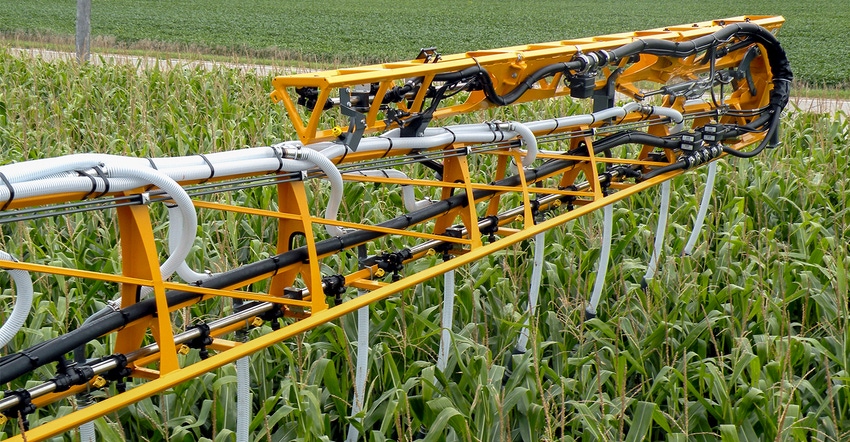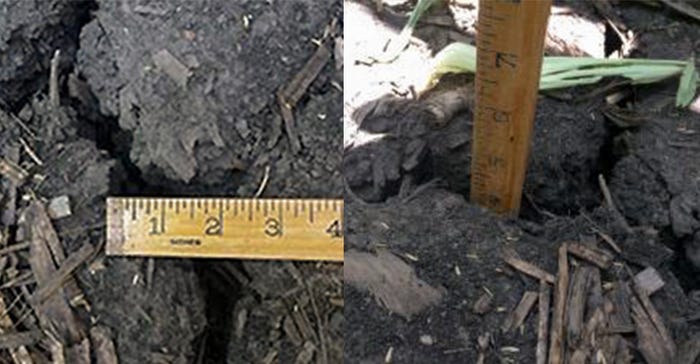
The time of year is quickly approaching for aerially seeding cover crops into standing corn and soybeans. Some farmers hire an airplane to fly on cover crop seed; others use a high-boy applicator to make the seeding.
Why seed a cover crop in late summer in a standing corn or soybean crop? Why not wait until after harvest to seed it? Earlier seeding allows more growth, more biomass production to protect soil from erosion, and the opportunity to extend fall grazing.
One benefit of cover crops in a dry year, if you can get them to grow, is to scavenge nutrients that were not used by row crop production due to abnormally dry soils. But with this summer’s extended dry period and not many good chances for rain in the forecast, farmers are concerned about seeding cover crops in dry conditions.
Follow these steps to minimize risk
Iowa State University Extension field agronomists Angie Rieck-Hinz and Meaghan Anderson offer the following suggestions to help minimize risk when seeding in dry soil conditions. They also address the potential for herbicide carryover to impact establishment of cover crops:
• Delay aerial seeding until the forecast for rainfall improves.
• Switch from aerial seeding to postharvest seeding, with hopes for improved chances of rain. You can use a no-till drill, for example, to get needed seed-to-soil contact.
• As more time passes with delayed seeding, consider switching to cereal rye to get value from the overwintering cover crop versus one that is winter-killed.
• Consider making a light tillage pass to get better seed-to-soil contact with postharvest broadcast seeding of cover crops. This practice is against the grain of eliminating tillage passes to increase soil health but may be better for germination success.
Other things to consider
What about all those cracks in the soil? “With some liberty in making assumptions, if we assume the seed is evenly distributed across the 30-inch row, then we lose 1/15th of our seed with a 2-inch crack,” says Rieck-Hinz. These two photos below taken in northern Story County on Aug. 9 show a 2- to 2.5-inch-wide crack in the soil, 4 inches deep. “If we seed now, with a crack like that on a 30-inch row, seed is likely to fall in the crack and be lost from the purpose of growing the cover crop,” she adds. “Even if we get rain, the crack may swell shut, but the seed is unlikely to germinate from such a depth.”
 SOIL CRACKS: Seed is likely to fall in these cracks and be lost and not grow a cover crop. Even with a timely rain, the crack can swell shut and seed is unlikely to germinate from such a depth.
SOIL CRACKS: Seed is likely to fall in these cracks and be lost and not grow a cover crop. Even with a timely rain, the crack can swell shut and seed is unlikely to germinate from such a depth.

Herbicide carryover a concern
Herbicide carryover is an important consideration following a dry summer, especially if applications of residual herbicides were made without significant rainfall afterward. There is little information available on research that specifically relates the risk of cover crop failure to herbicide use in dry conditions, “but we do have some information about the relative sensitivities of different cover crops to herbicides,” says Anderson.
Generally, radish is considered to be one of the most sensitive species to herbicides, and cereal rye is one of the most tolerant across these situations. Knowing this information, you can begin to assess risk of seeding different cover crop species. Other research is available to look at some of the relative sensitivities of different species to different herbicide products. Kevin Bradley, weed scientist at the University of Missouri, did three seasons of cover crop establishment work and has it posted online on his website. He applied full rates of herbicides in late June or early July, and drilled cover crops into plots in early to mid-September.
The researchers noted that more significant issues were documented in years with less rainfall. Considering the results of the Missouri research, you should err on the cautious side as this year is more likely to be one that would cause injury. For fields that have had little rainfall after all herbicide applications this spring and summer, your cover crop species choice may be limited.
Test soil for herbicide carryover
After looking at the information available, you can do some work on your ground to help determine whether a cover crop failure is likely to occur. A simple evaluation known as a herbicide bioassay can be done with a small amount of effort. Steps to do a herbicide bioassay are listed below; more extensive instructions are in this linked article.
1. Collect soil from multiple, representative areas of a field to a depth of 2 to 3 inches. Collect the same kind of sample from a “control” area with similar soil, perhaps a garden or other area without herbicide application.
2. Mix each soil sample thoroughly and place in pots or flats, making sure to keep the control soil separate from the soil of concern.
3. Plant several cover crop seeds of your species of interest into both the control soil and soil of concern.
4. Water soil regularly to keep it moist but not soaked.
5. Monitor seedling growth and development for at least two weeks. Cover crop seed will almost always germinate, but may die or have stunted growth later.
The herbicide bioassay is a simple and inexpensive method to help determine whether herbicides in a field will likely cause a cover crop failure. However, if this cover crop is planned for use as a feed source for livestock, herbicide label crop rotation intervals and grazing restrictions must be taken into consideration as well.
While ISU agronomists have concerns for cover crop establishment following such a dry growing season as some areas of Iowa are experiencing, they say cover crops will be of vital importance this year. Plan for potential herbicide carryover issues by studying the research on herbicide carryover in cover crops, and perform herbicide bioassays where necessary. When planting cover crops, choose methods more likely to be successful in dry environments and plan to seed prior to a rainfall event if possible. With some planning, this fall can still be a successful cover crop establishment season.
About the Author(s)
You May Also Like




